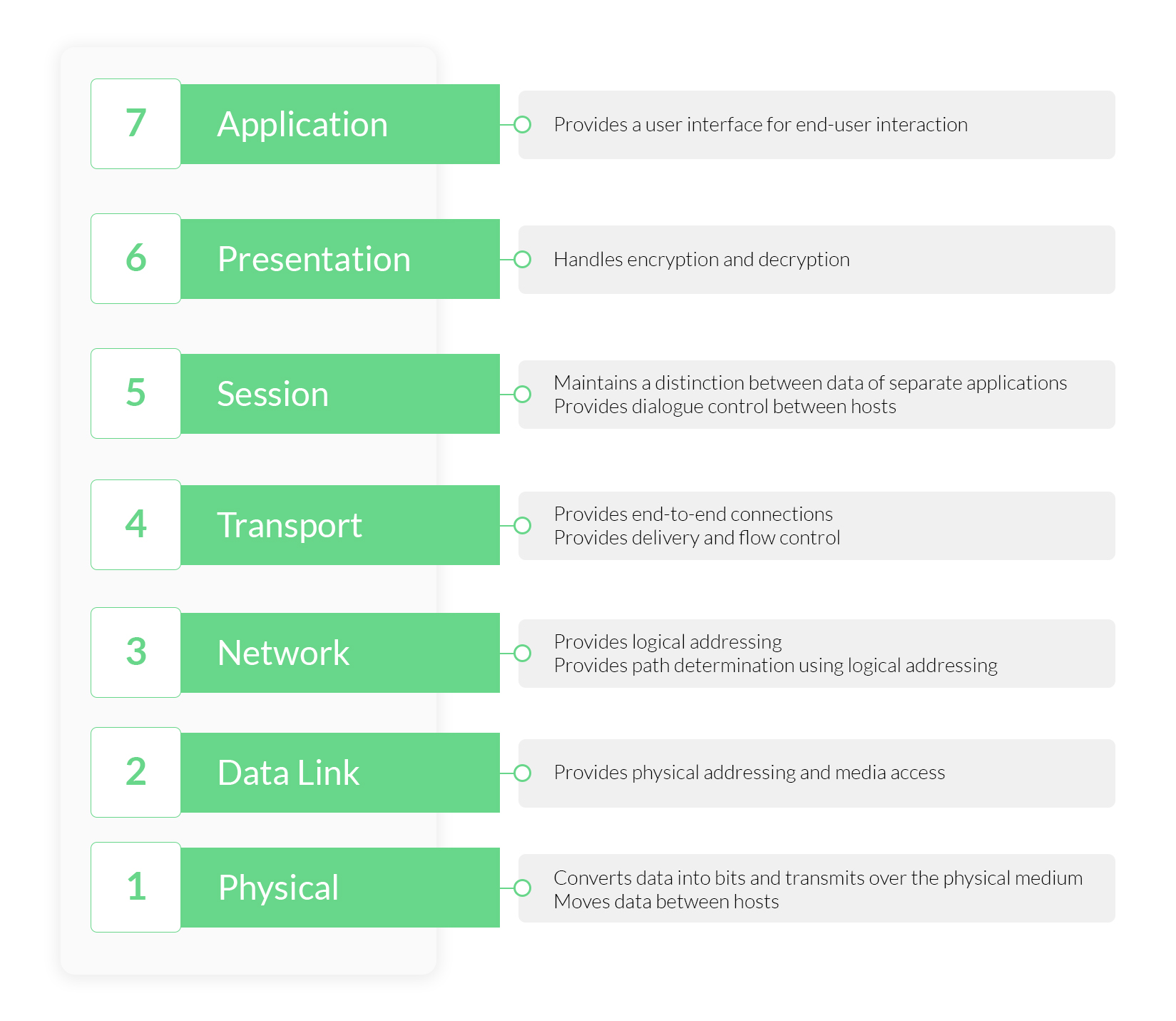Layer 2 protocols are a list of communication protocols used by Layer 2 devices (such as network interface cards (NIC), switches, multiport bridges, etc.) to transfer data in a wide area network, or between one node to another in a local area network.
To understand Layer 2 network protocols, we must learn about the Open Systems Interconnection (OSI) model and Layer 2 first. Touted as the data link layer, Layer 2 is the second of the seven-level OSI model that is responsible for error-free data transmission between devices in the same network.
OSI is a standard model for network protocols and distributed applications that separates the workings of a network into seven different layers based on its functionality. Each layer performs a different set of functions and is independent from the other layers.

The primary function of a data link layer is to process raw transmissions from the physical layer, and transform it into an error free transmission in the network layer. This is accomplished by having the sender (a Layer 1 device) break the input data into encoded data frames, transmit the frames sequentially, and process and decode the acknowledgment frames obtained from the receiver (a Layer 3 device).
The smallest unit bit of a Layer 2 protocol is called an Ethernet frame, or simply frames, and is different from bits since frames can be used to detect any in-transit data corruption.
Depending on how a frame is transferred, it can be categorized as:
The data link layer is divided into two sub layers:
Depending upon their requirements, certain protocols are chosen over others. Example: Cisco switches prefer its own communication protocol. Here is a list of commonly used Layer 2 protocols:
| LLDP (Link layer discovery protocol) | LLDP is vendor neutral, and is commonly used as a component in network management and network monitoring applications. |
| CDP (Cisco Discovery Protocol) | CDP is a Cisco proprietary protocol that support the IEEE 802.1ab version of LLDP, and is primarily used to share information between directly connected Cisco devices. |
| IP route | This command contains information from the IP routing table that can be used to forward a packet through the best path towards its destination. |
| FDB (Forwarding database) | FDB stores MAC addresses of the discovered devices and their respective ports. This protocol is preferred for discovering switches. |
| ARP (Address Resolution Protocol) | ARP maps dynamic IP (Layer 3) with MAC addresses (Layer 2). ARP translates 32-bit addresses to 48-bit and vice versa, and is preferred by IPv4 devices. |
| Multi-link trunking Protocol (MLT) | MLT provides high-speed, fault tolerant connection between servers, switches and routers by grouping all ethernet links into a single logical ethernet link. |
| CAN (Controller area network) | CAN facilitates communication between the applications of microcontrollers and their devices without relying on a host computer. |
| PPP (Point-to-Point Protocol) | PPP allows you to establish communication between two routers without the help of a host. |
Some of the other data link layer 2 protocols are as follows:
ManageEngine OpManager provides a comprehensive list of out-of-the-box features that greatly aid in simplifying your network management process. OpManager's real-time alert-based fault management system ensures your network is performing at peak efficiency, so your end users do not experience any network backlashes.
"New to OpManager? Download a 30-day free trial, or schedule a live demo with our product expert to see how OpManager can optimize your network monitoring experience."